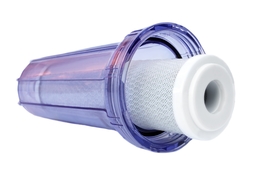Cross-linked anion-exchange membranes with ultrahigh charge densities
TECHNOLOGY NUMBER: 2023-058

OVERVIEW
A method for improved ion transport and permselectivity in ion-exchange membranes (IEMs)- Scalable synthesis of ion exchange membranes for water treatment and energy applications
- Ultrahigh charge densities result in unmatched combination of high permselectivity with high ion conductivity
BACKGROUND
Ion-exchange membranes (IEMs) used in water treatment and energy applications selectively transport ions of a given charge (positive or negative) and prevent the crossover of oppositely charged ions and other undesirable species. Current commercial IEMs are inadequate for non-traditional, highly impaired water sources (e.g., brines, produced flowback water) and are also a limiting factor in energy applications. Improved rates of ion transport and greater permselectivity are required for these demanding applications.
INNOVATION
Researchers at the University of Michigan have developed a new synthetic methodology that provides access to a new class of IEMS with greater charge density and lower water uptake values. The approach utilizes inexpensive, commercially available starting materials that are cost-competitive with those used to produce current IEMs. The membrane fabrication process can be scaled up and is compatible with current production lines. The strategy is applicable to a variety of cross-linkers, allowing for optimization for specific applications. The resulting IEMs display ultrahigh charge densities, and the material performances are unprecedented - exceeding both the selectivity and throughput of conventional IEMs. This is particularly impressive given that many of the physical properties of IEMs (permselectivity, ion conductivity, water content, charge density) are inversely correlated. Improvements in one property typically require a decrease in at least one other. The University of Michigan synthetic strategy avoids such tradeoffs and represent a truly step-change improvement in IEM performance. The researchers have demonstrated this approach with anion exchange membranes (AEMs), though the approach may also be applicable to cation exchange membranes (CEMs).